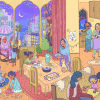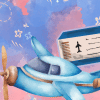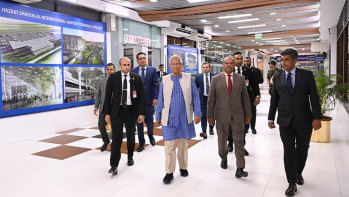What makes modern-day Bangladeshi comics so interesting

Years ago, Bangladeshi comic enthusiasts primarily immersed themselves in the captivating worlds of comic books from DC and Marvel. Those fortunate enough to attend schools with well-stocked libraries also enjoyed classic titles like The Adventures of Tintin and Archie. When it came to Bangla comics though, many generations grew up cherishing the works of Pran Kumar Sharma's Chacha Chaudhary and Narayan Debnath's Nonte Fonte.
When it came to Bangladeshi comics, we typically turned to a variety of daily, weekly, and monthly publications – primarily newspapers and magazines. I particularly enjoyed reading Unmad and Sharier Khan's Babu among other favourites.
Today, the Bangladeshi comic scene has undergone a significant transformation. Modern Bangladeshi comics now feature varying art styles and captivating storytelling. As you explore these comics, you'll notice a distinct intention in the work of the artists and writers.
Using comics for socio-political commentary is not a new concept. Unmad has been doing this effectively for years. Recently, our very own superhero comics like Captain Kathal, Shabash, and Ms. Shabash – all created by Mighty Punch Studios, have continued this tradition. These comics address a range of societal and national issues, offering insightful commentary on contemporary problems.
Many local comics are now also creating their own shared universes. For instance, Captain Kathal, Shabash, and Ms. Shabash all exist within the same universe. While Marvel and DC have long mastered this concept, the emergence of such interconnected storytelling in Bangladeshi comics is an exciting development for local fans.
While discussing Mighty Punch Studios and its superhero universe, it's notable that the organisation is also exploring animated adaptations of its superhero comics. Another exciting development in our local comic book industry is the introduction of our culture and history to younger generations. A prime example is the Mujib graphic novel by our country's Centre for Research and Information. This series vividly tells the story of our nation's founding father, making history accessible and engaging for many, especially the youth, through compelling visual storytelling. The Mujib graphic novel has also been translated into Japanese for its local audience.

Additionally, another graphic novel about our founding father has been created in the Japanese manga style. This is just one instance of how our local comic artists and writers are increasingly inspired by and incorporating the manga style into their work.
Recently, Source? started publishing seasonal magazines featuring Bangladeshi manga, along with content on art, anime, and Japanese pop culture. Source? aims to deliver the authentic experience of Japanese manga to our local audience, using content from local comic artists.
Dhaka Comics has been a strong supporter of aspiring comic artists, gaining significant popularity in the local scene over the past few years. Since last year, their Protibastob comic has produced some of the finest work in our local comic industry, excelling in both visuals and storytelling.
All in all, it's a great time to be a Bangladeshi comic fan, especially if you're into local comics. It's safe to say that this industry has come a long way, and it has no intentions of slowing down anytime soon.
What remains to be seen is how far it can go and stretch the limits of our imagination.
Faisal is the In-Charge of Campus, Rising Stars, and Star Youth.

 For all latest news, follow The Daily Star's Google News channel.
For all latest news, follow The Daily Star's Google News channel. 









Comments